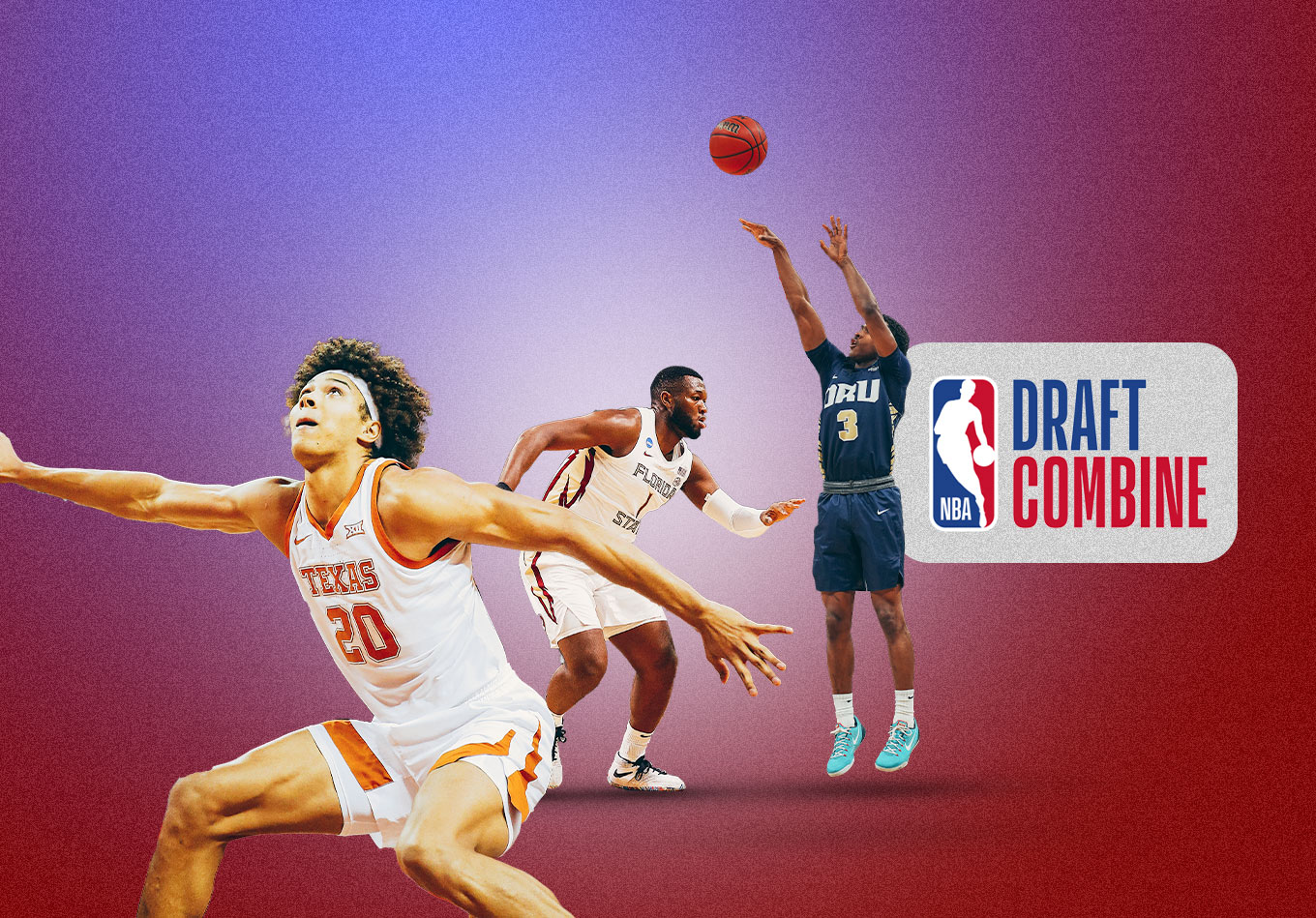Using new AutoStats data, which includes advanced college tracking metrics that were previously unavailable, we’re identifying prospects who stand out in ways immeasurable by more traditional statistics.
For many of the NBA prospects hoping to get noticed or make a move up the draft board, the time is now.
The league recently announced the prospect fields for the G League Elite Camp and NBA Combine, which will take place this coming week in Chicago. The combine will include 109 hopeful draftees, each of whom will be given the chance to make a lasting impression in front of NBA executives.
While teams, analysts and fans eagerly await the forthcoming anthropometric measurements, athletic testing and scrimmages, we’re going to break down some of the prospects who stand out in ways immeasurable by traditional box score, play-by-play and even more mainstream advanced statistics.
AutoStats uses AI-enhanced body recognition technology to identify player position and movement across the entirety of the court. The tool collects comprehensive tracking data from any game through any television broadcast, generating a great deal of new information available on NBA draft prospects.
Using this data, here are some of our best NBA Combine and G League Elite Camp superlatives and players to watch:
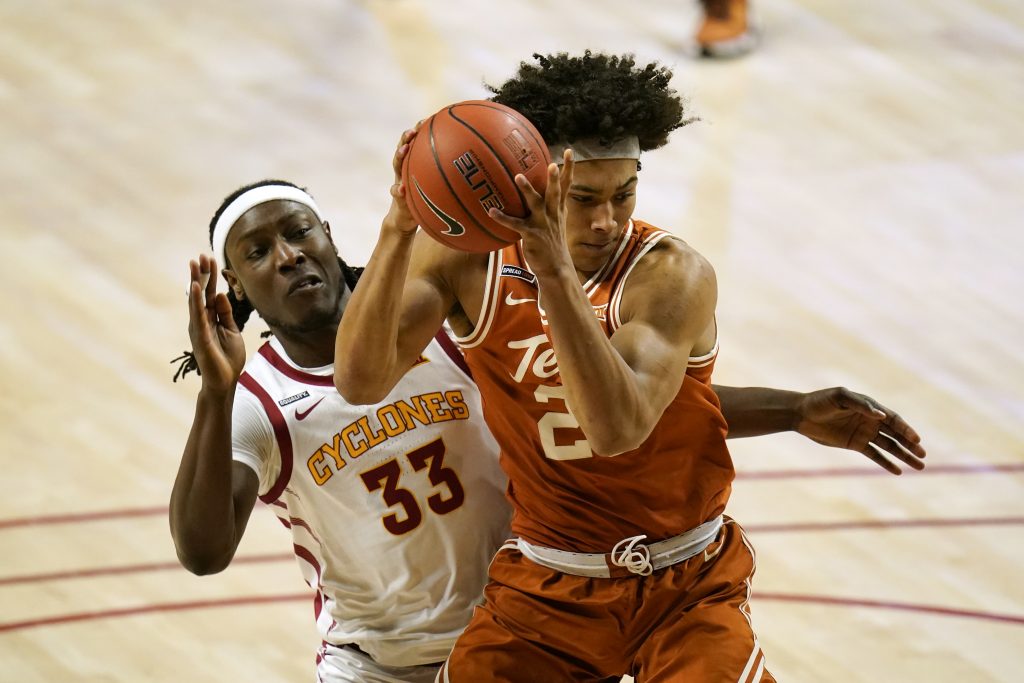
THE DISPLACER
NBA Combine: Jericho Sims | Texas | Sr. | 6’10” | 245 lbs.
Rebounding the basketball is often a team effort. While only one man ends up in possession of the ball, there’s typically some physical jostling between other bodies in the paint that have a significant impact on which team is best positioned to snag a rebound.
Traditional rebounding metrics are solely results-based and don’t attribute value to those who put their bodies on the line to box out, displace opponents and make rebounding opportunities easier for their teammates. Box-out percentage quantifies the rate at which a given player makes physical contact with an opponent to gain rebounding leverage/position.
Sims, known primarily for being a lengthy, fluid, pogo-stick athlete, posted the highest box out percentage (22.6%) among NBA Combine invitees by a significant margin.
What sticks out is how Sims can consistently keep his head on a swivel as an off-ball team defender while maintaining even the slightest touch of contact with his man. When he recognizes that a shot is about to go up, Sims uses this touch point as a reference to quickly relocate his body back toward his man and engage in his box out.
Despite his 6-foot-10 stature, Sims can sit in a chair, get low, move opposing rebounders off their spots, and increase the odds of himself or one of his teammates having a clear angle to clean the glass.
G League Elite Camp: Hunter Dickinson | Michigan | Fr. | 7’1” | 255 lbs. | 19.4%
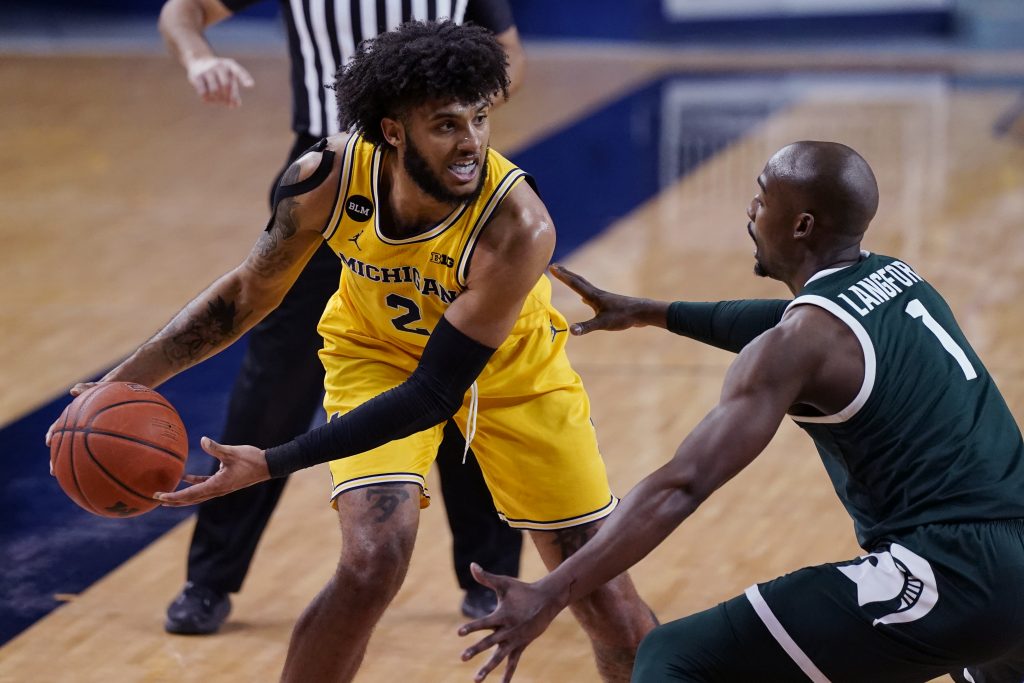
THE BALL-MOVER
NBA Combine: Isaiah Livers | Michigan | Sr. | 6’7” | 230 lbs.
While the notion of “hockey assists” does get tossed around from time to time in basketball dialogue, it’s historically more of a vague observational talking point than a quantifiable piece of data. Until now.
Secondary assist percentage represents the percentage of a player’s total pass volume that results in a secondary assist. Livers posted a 4.87% secondary assist percentage to lead all NBA Combine invitees.
Livers can leverage his gravity as a knockdown shooter (41.2% from deep on nearly 400 career 3-point attempts) to pull defenses slightly out of position and put them in a disadvantageous rotational scramble-mode. He also has enough juice off-the-bounce to draw help at the nail and kick out to the helper’s man, a classic precursor to a secondary assist opportunity.
Livers also has the IQ to be a secondary assister on his own baskets by conveying urgency as a relocator as soon as he makes a pass. While many players may simply stand along the arc and ball-watch, Livers is swiftly on the move in search of the new soft spots in the geometry of the defense.
G League Elite Camp: M.J. Walker | Florida State | Sr. | 6’5” | 213 lbs. | 3.43%
THE ICE MELTER
NBA Combine: DJ Steward | Duke | Fr. | 6’2” | 163 lbs.
While macro-level pick-and-roll point-per-possession metrics certainly have some value, adding the layer of context as to how the action is being defended provides much deeper insight.
Here, we’re looking, specifically, at which pick-and-roll initiator thrives against “ice” (a.k.a. “blue”, “push”, or “down”) coverage schemes. As a quick reminder, ice coverage is a side pick-and-roll defensive strategy in which the pick-and-roll handler’s defender flips his hips to force the handler into rejecting the screen and driving directionally toward the sideline.
Steward consistently dismantled the opposition when facing this scheme, with his team scoring 1.46 points per chance on plays where he functioned as the pick-and-roll initiator against ice coverage. That ranks first among all combine invitees.
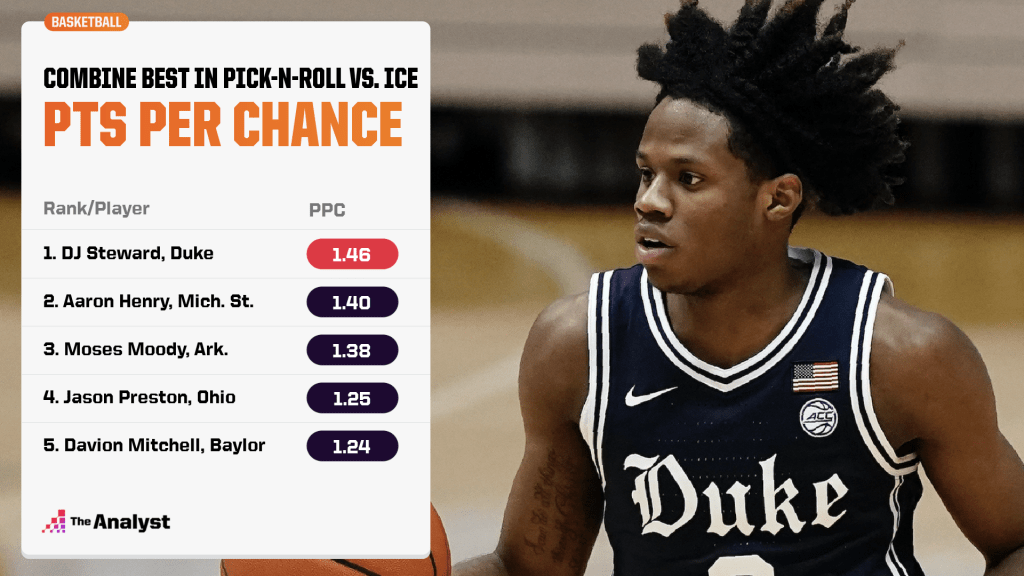
How? Steward has the lightning quick first step and subsequent acceleration to blow by the icing point-of-attack defender before he even fully engages in his push, leaving the icing big in a difficult spot with an athletic guard coming at him with a head of steam.
He also has some feel for cagey misdirection and herky-jerky manipulation of both the pushing guard and the icing big to create a path to the basket.
Last, but not least, Steward has the IQ and vision to recognize when his big sits on the 3-point line following the ice and there’s a kick-back opportunity for a wide open 3.
G League Elite Camp: Marcus Carr | Minnesota | Jr. (RS) | 6’2” | 200 lbs. | 1.14 points per chance
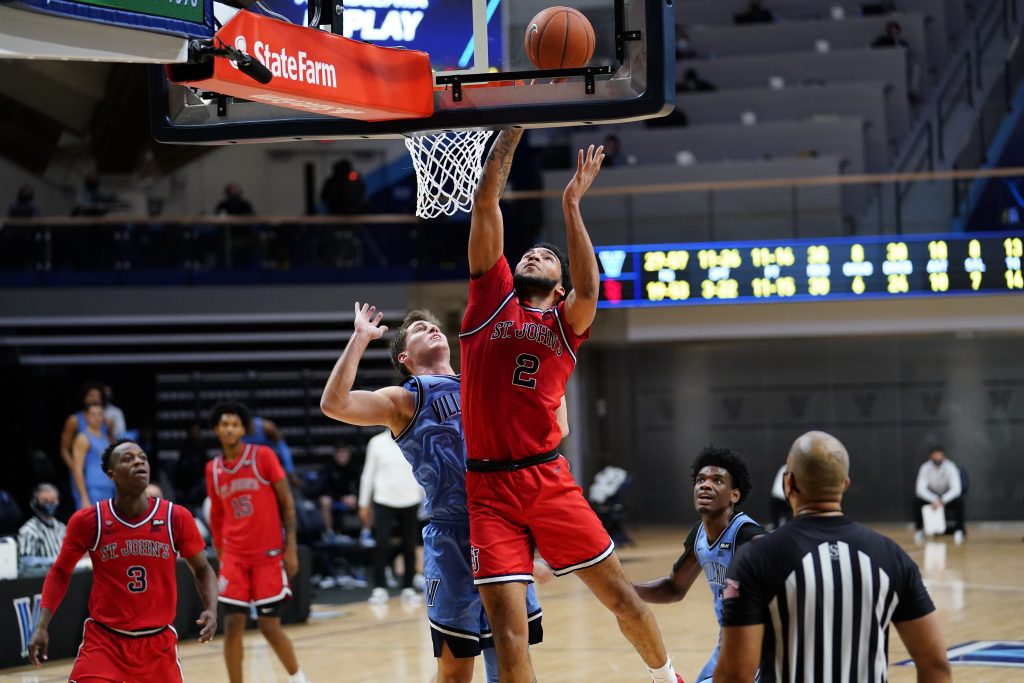
BOARD MAN GETS PAID
NBA Combine: Julian Champagnie | St. John’s (NY) | So. | 6’8” | 220 lbs.
Another gap in traditional rebounding metrics is that they don’t account for the variance of difficulty from rebound to rebound. Not all rebounds are created equal.
Many defensive rebounds are uncontested gimmes in which the offense doesn’t crash or isn’t in position to make a play on the ball. Sometimes based on luck, opponent offensive rebounding philosophy, or other ancillary factors, a player can rack up a high volume of rebounds without it being all that representative of true rebounding ability.
A player who snags a high percentage of rebounds while battling an opponent with a viable chance of beating him to the ball is inherently more valuable and more predictive of NBA rebounding ability than easy, uncontested rebounds in space.
Champagnie, who is primarily known for his combination of size and shooting prowess, pulls down a hearty 67.4% of contested rebound opportunities. That’s the highest rate among NBA Combine invitees.
Champagnie combines a keen sense of positioning with physicality, balance, and length extension high-pointing the ball to pull down both offensive and defensive rebounds amidst chaos in the paint. He has good hands, capable of both yanking down boards through contesting outstretched arms and intentionally tipping the ball off the glass to himself to control a rebound if the situation calls for it.
Champagnie, who is similarly aged to many of the freshmen in this draft class, has been a sharp riser on draft boards and could continue to boost his stock as teams unearth further insights on the nuances of his skill set.
G League Elite Camp: Chaundee Brown Jr. | Michigan | Sr. | 6’5” | 215 lbs. | 70.0%
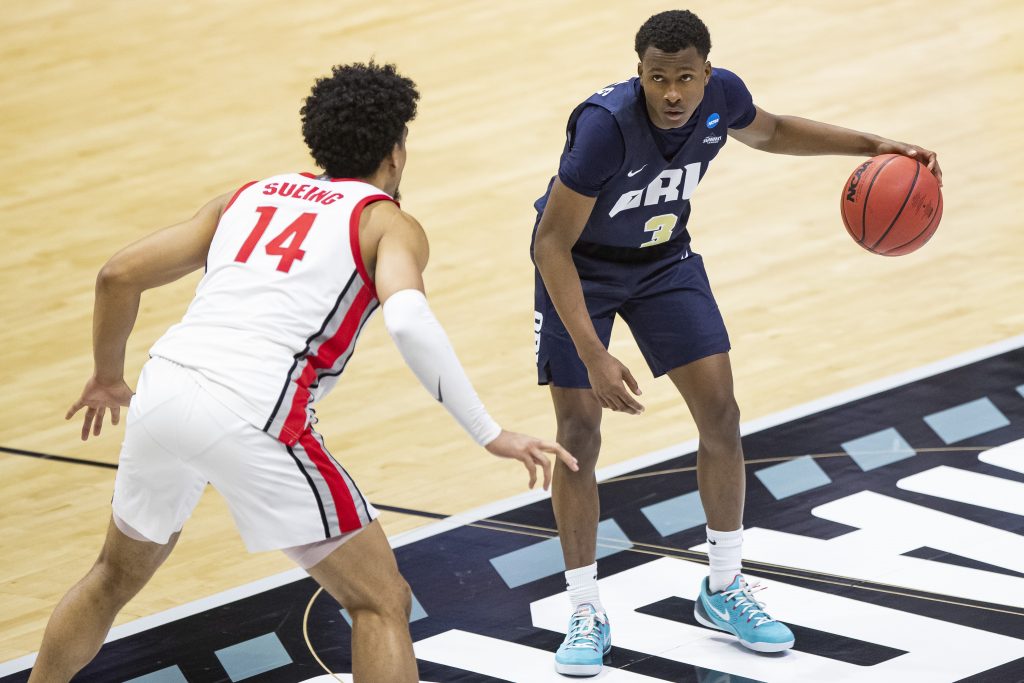
FROM THE PARKING LOT
NBA Combine: Max Abmas | Oral Roberts | So. | 6’1” | 165 lbs.
The NCAA 3-point line is now aligned with the 22-foot-1.75 international arc, which is notably closer to the 23-foot-9 NBA 3-point line. While this in and of itself has made NCAA 3-point shooting a bit more comparable when analyzing a given shooter’s translation to the NBA level, there’s still a notable gap in this distance.
Based on his jaw-dropping performance as the focal point of March Madness Cinderella Oral Roberts, it should come as no surprise that Abmas is a lights-out shooter from NBA range. What does surprise, however, is the extent to which he outpaces his peers. Abmas knocked down 61.9% of his 3-point attempts from NBA range in his games tracked, a truly absurd conversion rate.
Abmas has the ultimate green light (and rightfully so) as an off-the-dribble self-creator as soon as he crosses half-court. Many of these makes are Lillard-esque bombs from WELL beyond the NBA 3-point line. While his size is certainly a concern, Abmas is a rare shooting prospect who warrants being taken seriously as a draft candidate.
G League Elite Camp: JaVonte Smart | LSU | Jr. | 6’4” | 205 lbs. | 51.9%
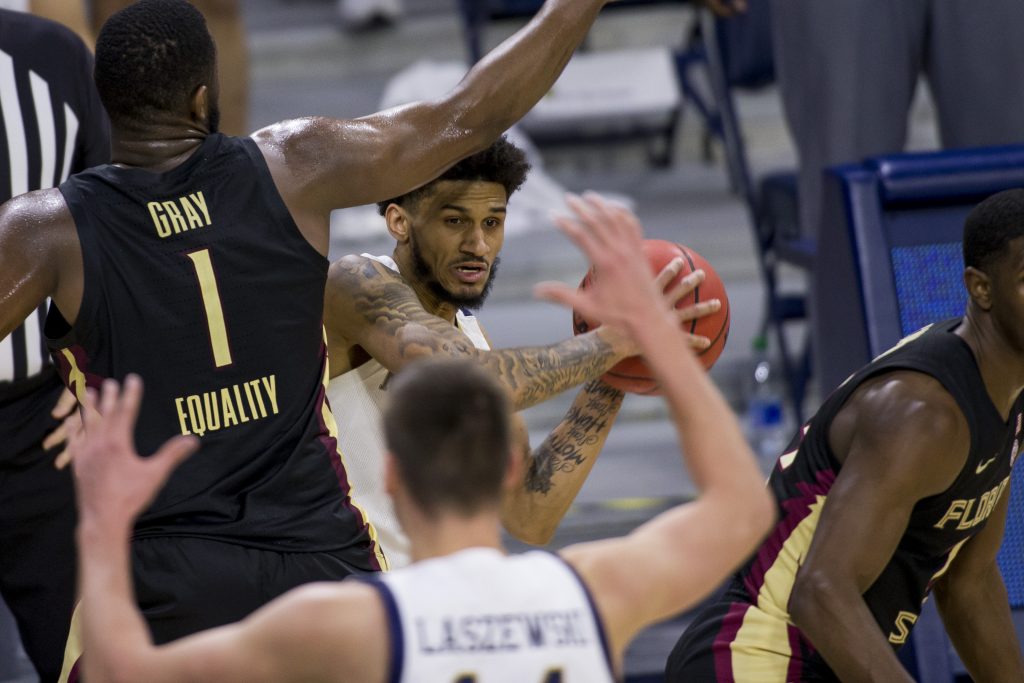
FLIP THE SWITCH
NBA Combine: RaiQuan Gray | Florida State | Jr. (RS) | 6’8” | 260 lbs.
In the NBA playoffs, we are reminded of the importance of switching and defensive versatility. While slow-footed, flawed defensive forwards and bigs can still carve out niche roles throughout the regular season, their value all but diminishes in high leverage situations.
Being a valuable pick-and-roll switcher isn’t as simple as surviving in space on an isolation island against a quick shot-creating guard. Good switch defenders often don’t even end up being the nearest defender when a shot is taken following a pick-and-roll initiation, as they’re able to cut off the guard’s preferred attack angle, put them in an uncomfortable spot, and make them give up the ball.
Gray is a consistent stalwart in switching onto pick-and-roll handlers, with his team allowing only 0.56 points per chance in these situations. That ranks first among all combine invitees.
He’s an unconventional player with an unconventional build at 6-foot-8, 260 pounds, but Gray is an absolute tank who, if one didn’t know better, could be perceived as a defender twitchy guards should seek out in pick-and-roll actions. However, he has quick feet for his size and can leverage his strength and defensive IQ to contain even the quickest of guards he picks up.
Opposing pick-and-roll initiators often aren’t even able to create enough separation for a shot attempt, and those that they are able to get off are often difficult, contested looks. Even in late clock situations, Gray frequently forces initiators to give up the ball to teammates who are then rushed to beat the shot clock buzzer.
G League Elite Camp: Balsa Koprivica | Florida State | So. | 7’1” | 240 lbs. | 0.65 points per chance
Note: Only prospects with 300+ offensive chances and 300+ defensive chances were considered for the above. Minimum event-based thresholds varied from category to category based on the shape of the data, but generally required a volume of at least 20-30 chances.
Design by Matt Sisneros.
